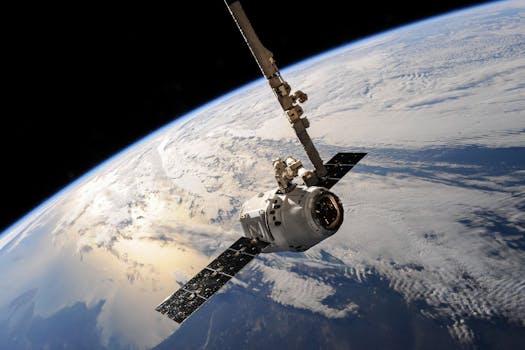The Future of Satellites: Revolutionizing Global Connectivity

The Future of Satellites: Revolutionizing Global Connectivity
As we continue to push the boundaries of space technology, the future of satellites is looking brighter than ever. With the ability to provide global connectivity, facilitate Earth observation, and enable precise navigation, satellites are becoming an integral part of our daily lives. The future of satellites is not just about launching more satellites into orbit, but about creating a network of interconnected satellites that can provide unparalleled services and capabilities.
Introduction to the Future of Satellites
The future of satellites is being shaped by advancements in technology, changes in consumer behavior, and the growing demand for global connectivity. With the rise of the Internet of Things (IoT), 5G networks, and cloud computing, the need for reliable and high-speed connectivity is increasing. Satellites are well-positioned to meet this demand, providing coverage to remote and underserved areas, and enabling a wide range of applications, from telecommunications to Earth observation.
Advancements in Satellite Technology
Recent advancements in satellite technology have been significant, with improvements in launch vehicles, satellite design, and propulsion systems. The development of reusable launch vehicles, such as those produced by SpaceX and Blue Origin, has reduced the cost of accessing space, making it more viable for companies to launch satellites. Additionally, advancements in satellite design have enabled the creation of smaller, more efficient satellites, such as CubeSats, which can be launched at a lower cost and provide similar capabilities to traditional satellites.
Satellite constellations, such as those being developed by OneWeb and Amazon Kuiper Systems, are also transforming the future of satellites. These constellations consist of hundreds or thousands of satellites working together to provide global coverage and enable a wide range of applications, from broadband internet to Earth observation. The use of artificial intelligence and machine learning is also becoming more prevalent in satellite technology, enabling satellites to operate more efficiently and autonomously.
Applications of Satellites
Satellites have a wide range of applications, from telecommunications to Earth observation. Telecommunications satellites provide connectivity to remote and underserved areas, enabling communication, navigation, and other services. Earth observation satellites, such as those used for weather forecasting, climate monitoring, and natural resource management, provide critical data and insights that help us understand and manage our planet.
In addition to these traditional applications, satellites are also being used for new and innovative purposes, such as space tourism, satellite-based services, and asteroid mining. The use of satellites for these applications is still in its infancy, but it has the potential to transform the way we live, work, and interact with space.
Conclusion
In conclusion, the future of satellites is exciting and rapidly evolving. With advancements in technology, changes in consumer behavior, and the growing demand for global connectivity, satellites are becoming an increasingly important part of our daily lives. As we continue to push the boundaries of space technology, we can expect to see new and innovative applications of satellites, from telecommunications to Earth observation and beyond.